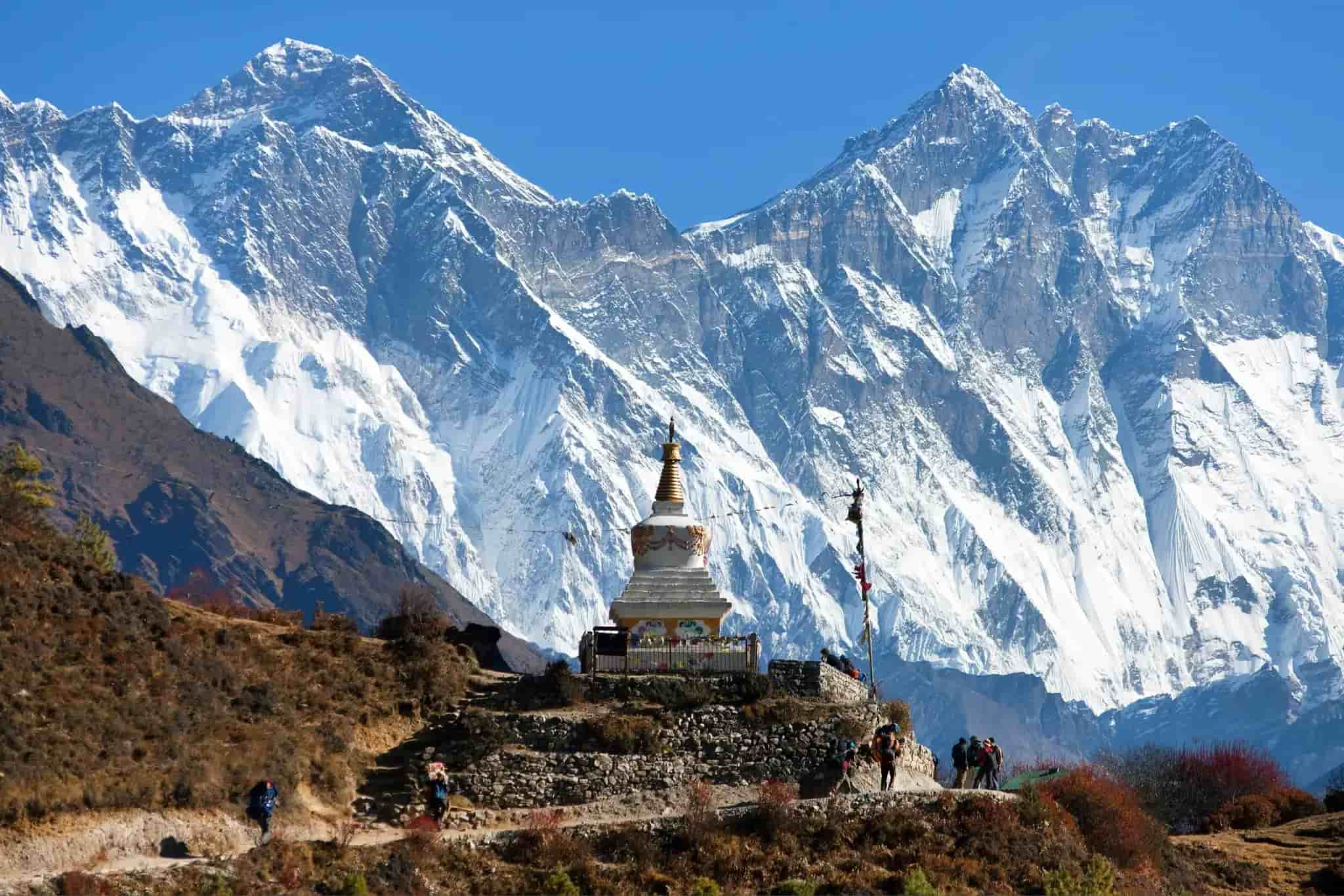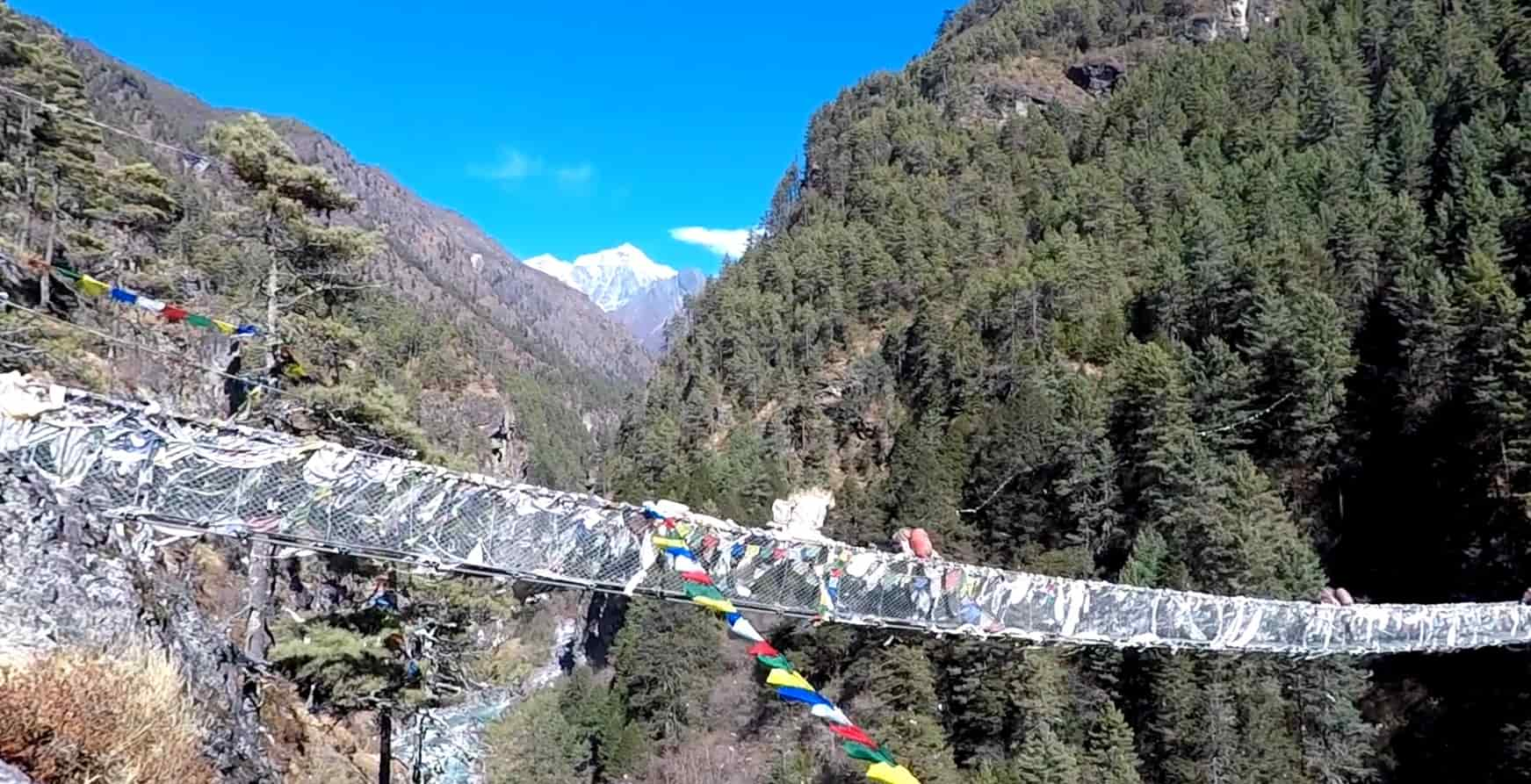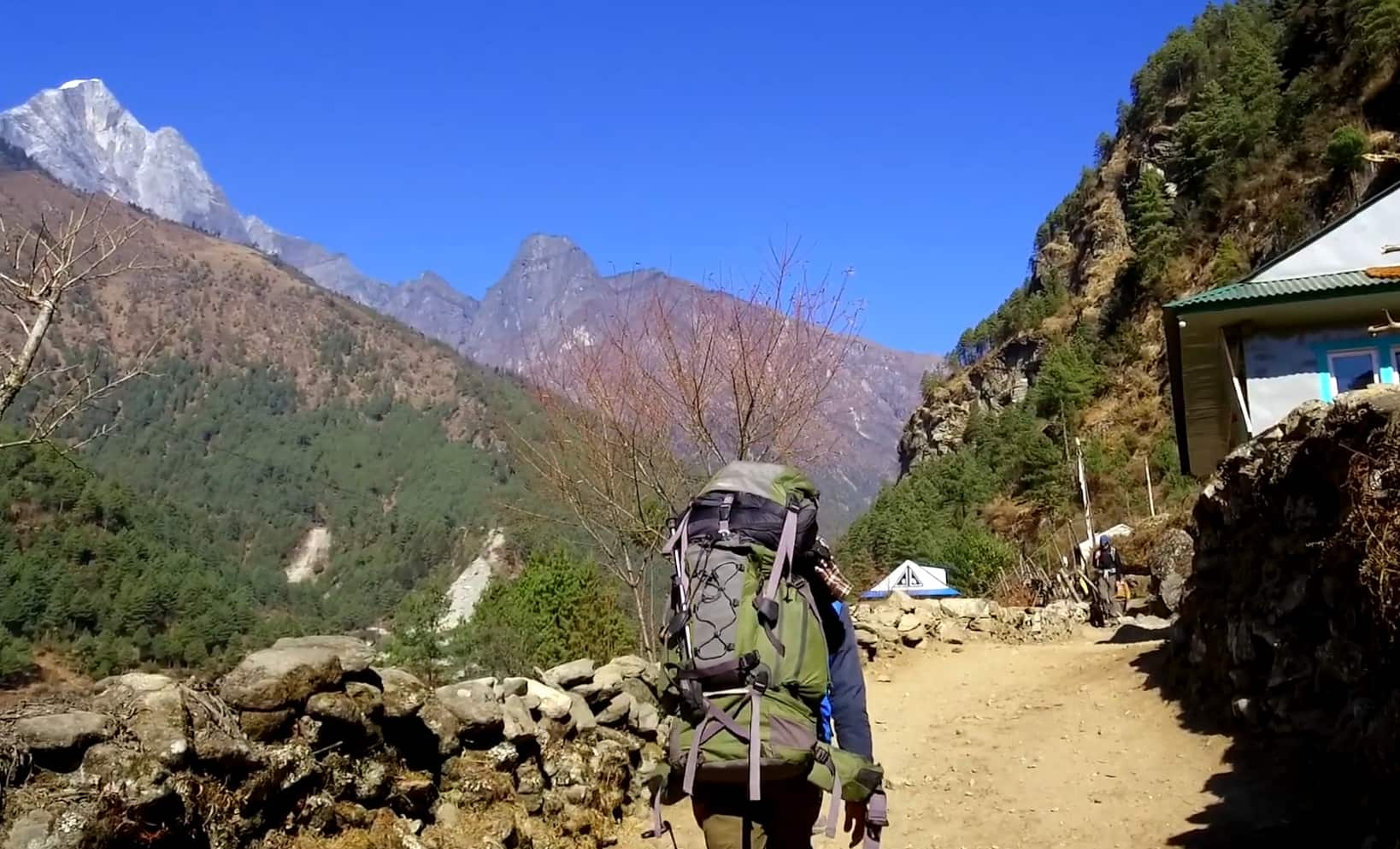Trip Overview:
The Everest View Trek is a specially designed adventure for people who want to see Mt. Everest without having to complete the Everest Base Camp Trek which is more demanding and lasts a longer duration. This trek provides the most spectacular, crystal-clear panoramas of the world's highest mountains, not just Mt. Everest, but also other giants like Lhotse, Ama Dablam, and Nuptse, minus the physical demands of the full Everest Base Camp (EBC) expedition.
Along with that, it also allows you to explore the legendary Sherpa culture while staying in your comfort zone outside of the high-risk altitude zones and in the warm and cozy teahouses of the lower Everest region.
Highlights of the Trek:
Let’s take a quick look at some of the major highlights of the Everest View Trek:
- Panoramic views of Everest, Lhotse, Ama Dablam, and Thamserku.
- Thrilling flight to Lukla Airport (Tenzing-Hillary Airport)
- Cultural exploration of Namche Bazaar and traditional Sherpa villages
- Enjoying breakfast/tea with Everest as your backdrop at Hotel Everest View
- Visit to sacred Tengboche Monastery and Thame Monastery
- Experience authentic Sherpa lifestyle and Himalayan hospitality
- Low altitude, low risk, and high reward trek
- All-age friendly, great for families and senior trekkers
- Trek through Sagarmatha National Park, a UNESCO World Heritage Site
- Witness the rich biodiversity of Sagarmatha National Park, including rhododendron forests to mountain eagles
- Perfect introductory trek for those planning Everest Base Camp in the future
What Makes the Everest View Trek Unique?

The Everest View Trek, although seemingly easy, is not a scenic walk in the Everest region. It is a journey of perfect balance as it offers a genuine Himalayan trekking experience without the extreme physical toll or time commitment like the EBC trek. Most treks in the Himalayas are often chasing altitude. However, the Everest View Trek allows you to slow down and truly enjoy the mountains, the authentic Himalayan life, and the peaceful Buddhist culture.
For those trekking with a child to those who want to explore the Himalayas after retirement, this trek is open for all regardless of the age group as it features a trail that is mostly accessible in all sections. This trek is also known to be one of the safer treks of the Everest region as there is low risk of altitude sickness, making it perfect for first time trekkers. What makes the Everest View Trek unique is the balanced blend of adventure, comfort, and meaning.
Major Attractions Along the Route:
Now, let’s delve deeply into some of the major attractions that will keep you hooked along the Everest View Trek route.
1) Tenzing-Hillary Airport, Lukla:
First on the list of any trek in the Everest region must be the Tenzing-Hillary airport which is regarded as the most dangerous airport in the world. So much so that only a few pilots are allowed to operate the flights here. Situated in the heart of the rocky Himalayas in Lukla, this airport basically has a small airstrip in the name of runway, and while it is challenging and slightly scary to land here, you will also get equal adrenaline rush. Starting point for all the treks of the Everest region, this airport sets the grand stage for your thrilling trek that lies ahead. Also, you can enjoy stunning Himalayan views from your flight.
2) Sherpa People and Their Culture:
Any trek to the Everest region, including the Everest view trek, is incomplete without the mention of the Sherpa people as they are the heart of the Khumbu region. Regarded as the guardians of the Himalayas, the Sherpa people are known for their dedicated resilience, warm hospitality, and fascinating cultures and traditions.
Sherpas are known as the Guardians of Himalayas because it is said that their body has adapted well to the challenging circumstances of the high altitude and they can be of critical importance to help you complete the trek.
As you explore the Everest View Trek, you will get a lot of time to interact with the locals and learn more about their culture, their mountaineering prowess, and also about Buddhist way of living in some of the highest villages in the world.
3) Suspension Bridges:

Crossing suspension bridges in the Everest region also has a unique thrill to it as it signifies a symbolic passage between valleys and a classic Everest experience. The Everest View Trek features many small and big suspension bridges, the main one being the iconic Hillary suspension bridge over the Dudh Koshi River which is draped and adorned with many colorful prayer flags.
4) Namche Bazaar:
The vibrant Namche Bazaar located at 3,440 meters is the capital of the Khumbu region, and it is also the central hub for people seeking bakeries, cafes, local markets, and breathtaking mountain viewpoints.
This stop features a vast shopping market where you can get everything you want, along with the iconic mountain views in the background. You will forget for a second that you are in one of the most remote locations of the world. Namche Bazaar is also your key acclimatization stop for the Everest View Trek and undeniably the best place to experience Sherpa culture firsthand along the entire trekking route.
5) Thame Monastery:
An underrated gem in the Thame valley of Khumbu, the Thame monastery is one of the oldest in the region. The monastery offers a more peaceful experience as it slightly deviates from the crowded trail of the EBC trek.
6) Khumjung Village:
Khumjung village is yet another underrated highlight of the Everest View Trek route. It is located beneath the Khumbila Peak and here you will see an authentic Sherpa settlement. Here, culture and progress go hand in hand. The main highlight of this village is the Hillary School which was built by Sir Edmund Hillary for the Sherpa community. Besides that, Khumjung monastery features a Yeti Scalp which is a controversial yet iconic highlight of the region.
7) Tengboche Monastery:
A renowned name in the Everest region, the Tengboche monastery is regarded as the spiritual heart of Khumbu as it is the biggest monastery in the Everest region. Situated at an altitude of 3,860 meters, this is also the highest point of the Everest View Trek. The monastery overlooks Himalayan giants like Everest, Ama Dablam, and Lhotse which creates a peaceful and scenic vibe here.
The monastery is also one of the few hosts of the annual Mani Rimdu festival which is a celebration that is open to the public for three days every year and happens mostly in the month of November. If you align your itinerary with the festival, you will see a stunning display of masked dances, magnificent cultural shows, rituals, and the entire community coming together for celebration at the Tengboche monastery.
8) Phortse Village:
Located off the main trekking route, Phortse village is considered a major hub for mountaineering in the region, with a large number of its residents being Everest summiteers. It is also home to the Khumbu Climbing Center which provides training to the Sherpas. The environment is surrounded by terraced fields, ancient homes, and a calm atmosphere far from the crowds. The habitat makes it suitable for you to view unique wildlife like musk deer and Himalayan tahr. Overall, the village offers a more traditional and less commercialized glimpse into the life in the Himalayas.
All-Age-Group Friendly Trekking:

The Everest View Trek is an all-age-group friendly trekking, meaning you don’t have to think and rethink your plans of exploring the Everest region even if you are trekking with your family which has kids and old people.
Even if you are an old person wanting to trek on your own, you can always go on a solo trek to Everest View Trek where you can mix up with your trekking group and create new camaraderie and memories. The trek is limited up to low-risk altitude areas, meaning it doesn’t go beyond the altitude of 4,000 meters. Also, the trail is not that difficult as it continues in the rather commercialized trail of the Everest Base Camp Trek upto Tengboche.
You will see gentle gradients in terms of ascents, and the trail is dotted with comfortable teahouses providing all the amenities and a wide variety of food options too. There are also scenic resting spots along the route. All in all, the Everest View Trek is accessible to all.
Low Risk of Altitude Sickness:
As the trek goes up to a maximum altitude of 3,880 meters, there is very low risk of altitude sickness. It can’t be said that the risk is zero as it totally depends on the person, the way their body adapts, and their habits on the trek. However, the risk is still considerably low. If you stay hydrated, eat a balanced diet, go slow and steady, and acclimatize well, you will most likely make it to the end of the trek without having any symptoms of acute mountain sickness.
Pristine Flora and Fauna:
The Everest View Trek is located in the Sagarmatha National Park which is one of the protected areas of Nepal. Now, it is obvious that the trail is home to pristine flora and fauna, many unique just to the Everest region. In the starting point of the trek, you will see dense forests of rhododendron, fir, and pine trees as these are lower elevation areas. As you go higher, the vegetation starts getting scarce and you will hardy see lichens and mosses.
The fauna on the trail includes animals that have adapted well to the cold, such as Himalayan tahr, musk deer, and red pandas in lower areas, and animals like the pristine snow leopard at higher elevations. The trail also sees many birds like choughs, lammergeiers, blood pheasants, as well as the Himalayan Monal, which is the national bird of Nepal. These flora and fauna are more visible and active during peak trekking seasons like spring and autumn.
Alternate Routes for Everest Base Camp Trek:
The Everest View Trek is a standalone trek that leaves you with a fantastic experience on its own. However, if you are someone interested in the Everest Base Camp Trek but want to test out the waters first, this trek is the perfect choice for that too. This trek shares the route with the Everest Base Camp Trek. That means you will be trekking on the same route, with a few additions like Thame, Phortse, and Khumjung, but you will stop at halfway at Tengboche.
So, for those wanting to continue towards the base camp, they can continue ahead from here. In short, the Everest View Trek can also be looked at as a starter version to the Everest Base Camp Trek with a slightly more elaborate route.





